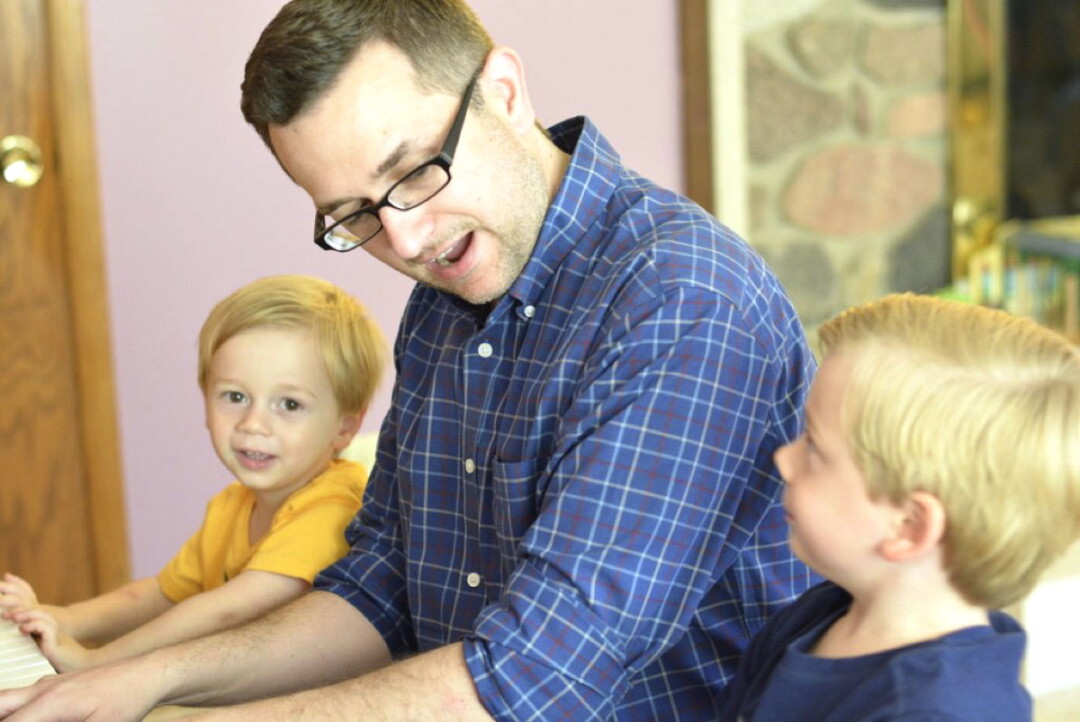How to Teach Your Kids to Love Music Without the Lessons

The benefits of musical training are impressive and widespread, ranging from improvements in linguistic ability to even, in some cases, delaying the onset of dementia. However, as Nick Poss puts it, no one makes music to hear conversations better at a dinner party when they’re 65. He has a point: Music is inherently social, and it can provide rewarding opportunities for interaction with your children, even if they don’t go on to become child prodigies.
If you want your kids to start reaping the benefits of music but don’t know where to start, have no fear. You’ll be glad to learn that getting your kids involved with music doesn’t have to mean investing in lessons, instruments, and hours of practicing right away. Instead, Poss – owner and instructor at the Eau Claire Music School – offers some great tips to incorporate music into your daily family life.
First, the best way to get your kids engaged in music is simply to make it yourself. “So if you want your kids to dance and play instruments, you’re going to have to dance and play instruments,” he says. “If you want your kids to enjoy listening to music, then you should make time to enjoy music yourself.”
Modeling music for your children will come more naturally to parents who already have some musical background. But what about the people who didn’t grow up taking piano lessons? The kids who mumbled their way through middle school choir and now have kids of their own who are interested in learning? Poss says any musical involvement with your kids is better than none, and it’s never too late to learn. “If you’re serious about enjoying the social benefits, the health benefits, the cognitive benefits, then get involved, and find a way,” he says. “It doesn’t have to be playing the ukulele. It could be beating a drum. It could be slapping your legs. It could be singing. There’s no one who can’t do one of those things.”
These days, nearly every single piece of recorded music is available at our fingertips thanks to services such as YouTube, Pandora, and Spotify. Relying on recorded music while doing simple musical activities is a great start, but if you want your kids to learn how to play music, you may want to consider diving in and teaching yourself. Poss is primarily a piano player, but a baby grand isn’t as readily available as the smartphone in your pocket. So, to be ready for whatever musical opportunity arises, he taught himself how to play the ukulele. He says its small size, portability, and ease of playing has made it a great instrument to play with his kids.
Poss says that one easy skill anyone can teach their children is “rhythmic entrainment.” “This means helping them to move in a steady rhythm,” he says. “This could be through dancing, hitting a percussion instrument, (or) shaking a shaker along with recorded music or while you’re making it yourself.” For a low-cost music-making option, a quick Internet search will produce a wide variety of ideas for creating homemade instruments, including drums, banjos, guitars, and many others, that you can use with your kids to work on their internal rhythm.
But the most important part of integrating music into your home life is to remember not to treat it as a subject your children have to master. “It should be a fun thing,” Poss says. “It should be something that you’re making space in your life for. And that includes music lessons too, you know. Music should be a joyous, fun activity that inspires kids. And so if you make it a task, or a chore, I think you’re diminishing a lot of the benefits.”
So instead of scheduling time for your child to practice his or her instrument, plan time to rehearse your family band in preparation for your first living room show (even if it’s only for the family dog).
Before you’re ready to go pro, check out Nick Poss’ Spotify playlist “Family Music Time: Songs for dancing, singing, and listening” for ideas for music to listen to as a family.




















